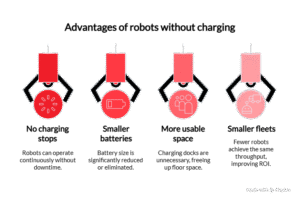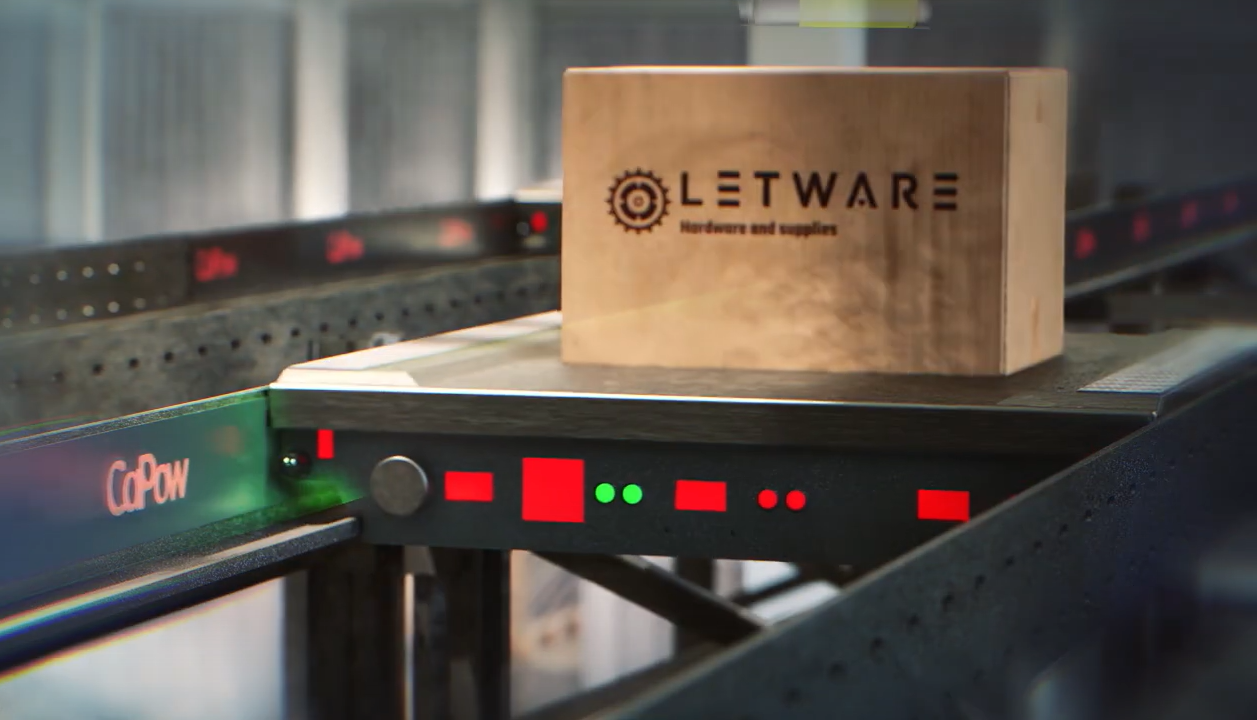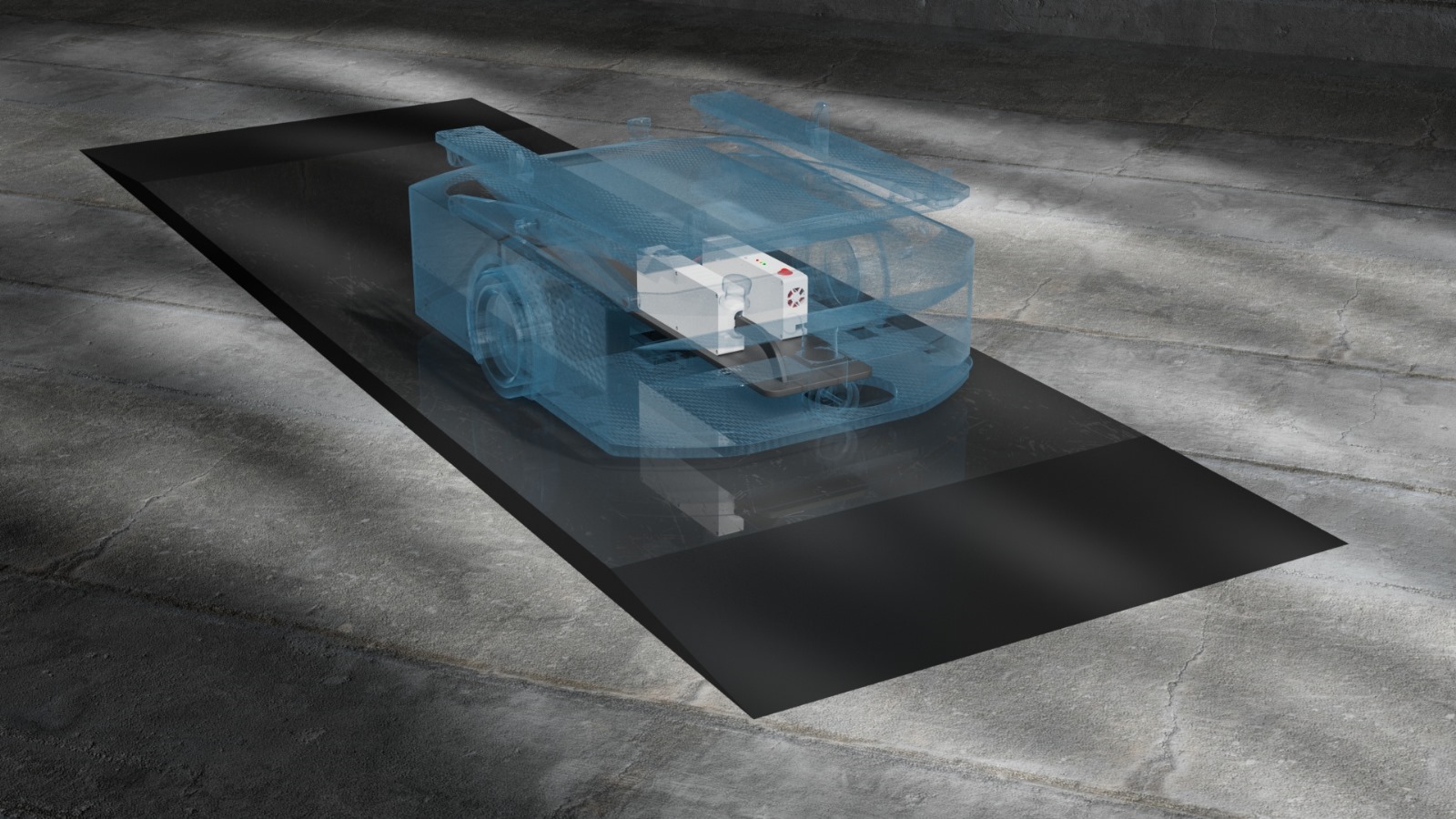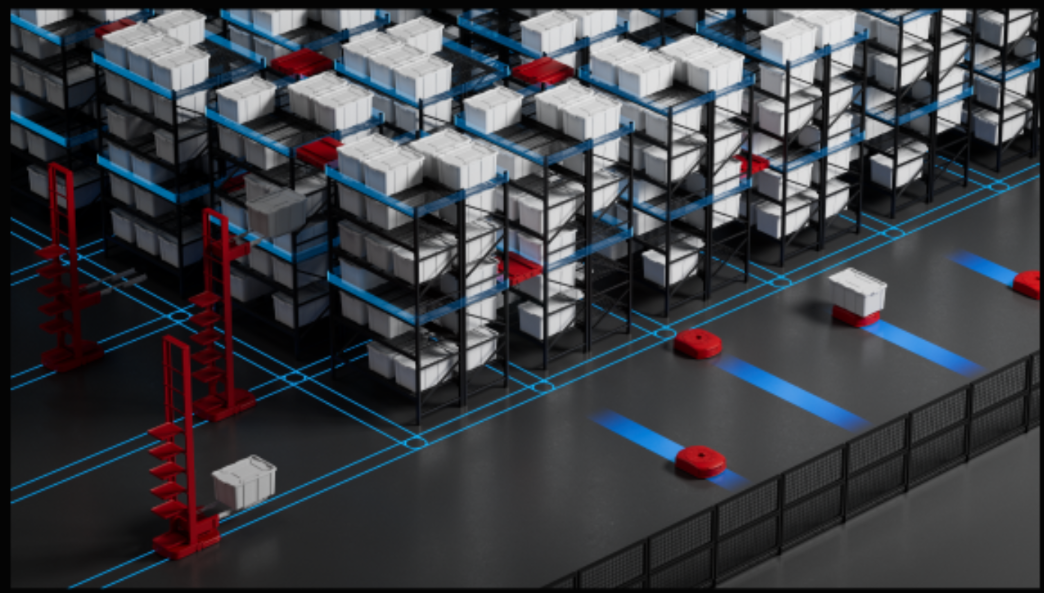The global market for autonomous mobile robot (AMR) charging stations is projected to grow from $1.96 billion in 2024 to $8.1 billion by 2034, according to Zion Market Research. At first glance, this looks like a success story for automation: more robots, more infrastructure, and more investment.
But take a closer look, and the reality is different. This surge isn’t a sign of efficiency: it’s proof of how much time, money, and warehouse space is being consumed by a single outdated requirement: charging.
The Hidden Cost of Charging
Charging infrastructure has quietly become one of the largest bottlenecks in warehouse automation.
- Time lost: Every minute a robot sits at a charging dock is a minute it’s not moving inventory.
- Space wasted: Charging zones eat up valuable floor space that could otherwise be used for storage or throughput.
- Oversized batteries: Batteries often account for up to 30% of a robot’s weight and a significant portion of its cost, further driving up capital expenses.
In other words, while companies are pouring billions into charging solutions, they are also inadvertently accepting downtime and inefficiency as part of their operations.
This is where the industry’s current trajectory is fundamentally flawed. Scaling robot fleets shouldn’t mean scaling charging stations.

A Different Approach: Power Without Pauses
At CaPow, we decided to rethink the problem from the ground up. Instead of trying to make charging faster, we asked a different question:
What if robots never needed to stop to charge in the first place?
Our answer is Power‑in‑Motion technology: a breakthrough energy delivery system that powers robots while they move. With CaPow, robots operate continuously, eliminating the need for charging stops altogether.
The Results Speak for Themselves
CaPow’s Power‑in‑Motion technology transforms warehouse operations:
- No charging stops: Robots run 24/7, eliminating downtime.
- Smaller or no batteries: Battery size is reduced from 30% of a robot’s weight to just 5-10%, or in some cases, removed entirely.
- More usable space: With no need for charging docks, operators reclaim valuable floor space for storage and throughput.
- Smaller fleets, bigger savings: With no charging-related idle time, fewer robots can achieve the same throughput, delivering faster ROI.
This isn’t just incremental improvement- it’s a fundamental shift in how energy is delivered and how automated warehouses operate.
The $8.1B Question
Zion Market Research’s projection for the charging station market is a wake-up call. If companies continue down this path, they’ll be spending billions to maintain a system that was never designed for true efficiency.
CaPow offers a better way. By eliminating the need for charging altogether, we’re unlocking the full potential of automation.
Stop Charging. Start Scaling.
The future of warehouse automation is about eliminating charging stations. With CaPow, you can:
- Keep robots moving 24/7
- Shrink your fleets and your costs
- Reclaim floor space for productivity
- Achieve faster ROI and long-term scalability
Billions will be spent on charging infrastructure over the next decade. You don’t need to be part of that statistic.
Stop charging. Start scaling.
Book a demo → capow.energy



